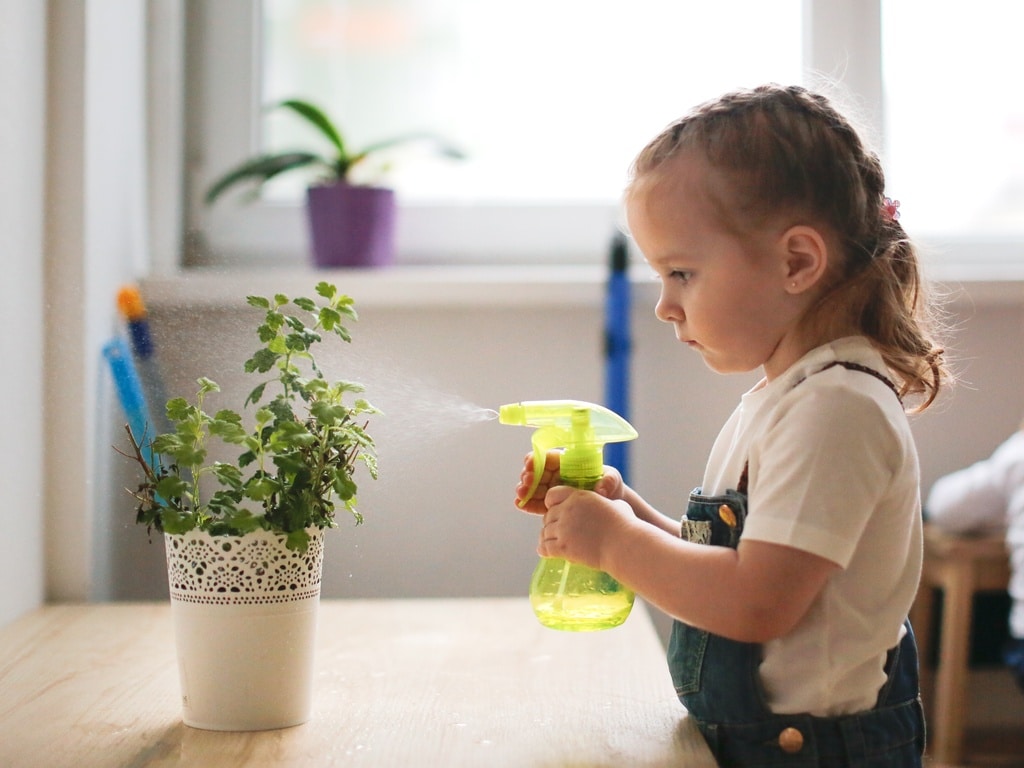
As an Amazon Associate, I earn from qualifying purchases. This post may contain affiliate links. Read my disclosure policy.
The Montessori method is gaining popularity among parents seeking to foster independence and a love for learning in their children. This educational philosophy, rooted in self-directed activity and hands-on learning, promotes the idea that children thrive when given the freedom to explore within a structured environment.
By incorporating Montessori principles at home, parents can support their children’s natural development and nurture skills that will benefit them throughout their lives. Keep reading as we explore Montessori at home and discuss a few things to consider with children and your family.
Create an Accessible Environment
One of the core tenets of the Montessori method is creating an environment tailored to a child’s needs. Start by adjusting furniture and tools to their size. Choose child-sized chairs, low shelves, and easy-to-reach storage so that they can access their toys, books, and supplies independently.
When children can retrieve and put away items on their own, it fosters a sense of ownership and responsibility in their environment. Simple changes, such as placing a step stool by the sink or using small utensils, empowers them to be more self-reliant in daily tasks.
Encourage Independence in Daily Tasks
Montessori homes emphasize the importance of involving children in everyday actions. Allow your child to participate in simple activities like cooking, cleaning, and dressing themselves. For example, invite them to help with simple kitchen tasks, such as washing fruits or stirring ingredients.
Setting up an organized space with hooks for coats or trays for shoes encourages them to take responsibility for their belongings. You might also consider investing in a laundry bag to help them carry their own laundry. These opportunities allow children to develop motor skills and feel capable of contributing to the household.
Provide a Variety of Engaging Materials
Children in Montessori environments thrive on learning through hands-on, purposeful activities. Provide a variety of materials that stimulate curiosity and build skills. Choose age-appropriate, open-ended toys like wooden blocks, puzzles, and artistic supplies that encourage creativity and problem-solving.
Rotate toys periodically to keep their interest high and make sure they aren’t overwhelmed by too many options. Montessori-aligned materials don’t have to be costly; everyday items like measuring cups, sensory bins with rice or beans, and even fabric scraps offer rich educational opportunities.
Establish a Routine
Predictability is a hallmark of Montessori learning environments. A consistent daily routine provides children with a sense of security and helps them understand what’s expected of them. Start by establishing regular times for meals, play, and rest. Within these blocks, allow some flexibility for them to engage in self-chosen activities.
A structured routine also fosters time-management skills and sets the foundation for discipline in future responsibilities. Whether it’s setting the table before dinner every night or tidying up their toys before bedtime, routines serve as gentle guides to instill responsibility.
By weaving Montessori principles into daily home life, you will help your children grow into confident and self-reliant individuals with a lifelong love of learning. Start small by making accessible adjustments, fostering independence in tasks, and integrating sensory activities. These practical steps also provide parents with a deeper connection to their children’s growth.
As always, sharing is caring! Please click on the buttons below to share this post with your friends!
